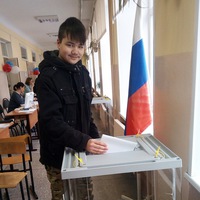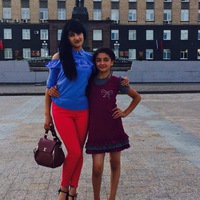
4. Расскажите о причинах перехода кочевников-казахов к юртам, почему исчезли повозки на колёсах.
Опишите юрту от почётного места (Top) до порога (босага), от очага до шанырака, укажите на их практическое и традиционное значение. 0
0
 0
0
Ответы на вопрос
 Внимание! Ответы на вопросы дают живые люди. Они могут содержать ошибочную информацию, заблуждения, а также ответы могут быть сгенерированы нейросетями. Будьте внимательны. Если вы уверены, что ответ неверный, нажмите кнопку "Пожаловаться" под ответом.
Внимание! Ответы на вопросы дают живые люди. Они могут содержать ошибочную информацию, заблуждения, а также ответы могут быть сгенерированы нейросетями. Будьте внимательны. Если вы уверены, что ответ неверный, нажмите кнопку "Пожаловаться" под ответом.

Повозки на колесах были удобны для равнин, они не годились для гористых, пересеченных местностей; поэтому потребовалось жилище, которое можно было разобрать и перевезти на вьючных животных.
Объяснение:
 0
0
 0
0

Reasons for the Transition of Kazakh Nomads to Yurts and the Disappearance of Wheeled Vehicles
The transition of Kazakh nomads to yurts and the disappearance of wheeled vehicles can be attributed to several factors. Here are some possible reasons:
1. Nomadic Lifestyle: The Kazakh people traditionally led a nomadic lifestyle, moving from one place to another in search of grazing lands for their livestock. This mobility required portable and easily assembled dwellings, which led to the use of yurts [[1]].
2. Environmental Adaptability: Yurts are well-suited for the harsh and unpredictable climate of the Central Asian steppes, where the Kazakhs traditionally lived. Yurts are designed to withstand strong winds, extreme temperatures, and heavy snowfall, making them more practical than permanent structures [[2]].
3. Transportation: Wheeled vehicles, such as carts and wagons, were not well-suited for the rugged terrain of the steppes. The lack of proper roads and the vast distances between grazing lands made wheeled vehicles impractical for nomadic herders. Instead, the Kazakhs relied on horses and camels for transportation, which were better adapted to the terrain [[3]].
4. Ease of Assembly and Disassembly: Yurts are portable and can be quickly assembled and disassembled, allowing the nomads to easily move their dwellings as they migrated with their herds. This flexibility was crucial for their nomadic lifestyle [[4]].
5. Availability of Materials: The materials used to construct yurts, such as wood, felt, and animal skins, were readily available in the steppes. These materials were lightweight, durable, and easily transported, making them ideal for constructing portable dwellings [[5]].
Description and Significance of Different Parts of a Yurt
A yurt is a traditional dwelling used by the Kazakh nomads. It consists of several components, each serving a practical and traditional purpose. Here is a description of the different parts of a yurt and their significance:
1. Top (Shanyrak): The top of the yurt is called the shanyrak. It is a circular opening at the center of the yurt's roof, allowing light to enter and smoke to escape. The shanyrak is considered the spiritual center of the yurt and symbolizes the connection between the earthly and heavenly realms [[6]].
2. Door (Bosaga): The door of the yurt is called bosaga. It is traditionally positioned to face south, as it is believed to bring good luck and protect the inhabitants from the cold northern winds. The door also serves as the main entrance and exit of the yurt [[7]].
3. Hearth (Ochag): The hearth, or ochag, is the central area of the yurt where a fire is lit. It provides warmth, light, and a place for cooking. The ochag is considered the heart of the yurt and symbolizes the family's unity and well-being [[8]].
4. Wall Coverings (Kerege): The walls of the yurt are covered with felt or woven fabric, known as kerege. These coverings provide insulation and protection from the elements. They also serve as a canvas for decorative patterns and symbols that reflect the Kazakh culture and traditions [[9]].
5. Framework (Uyk): The framework of the yurt, known as uyk, consists of wooden lattice walls and a circular roof structure. The lattice walls are made of flexible wooden poles, which can be easily assembled and disassembled. The circular roof structure provides stability and support for the yurt's roof [[10]].
The yurt's practical and traditional significance lies in its adaptability to the nomadic lifestyle, its ability to withstand the harsh climate, and its role as a symbol of Kazakh culture and identity.
I hope this information helps! Let me know if you have any further questions.
 0
0
 0
0
Похожие вопросы
Топ вопросов за вчера в категории История
Последние заданные вопросы в категории История
-
Математика
-
Литература
-
Алгебра
-
Русский язык
-
Геометрия
-
Английский язык
-
Химия
-
Физика
-
Биология
-
Другие предметы
-
История
-
Обществознание
-
Окружающий мир
-
География
-
Українська мова
-
Информатика
-
Українська література
-
Қазақ тiлi
-
Экономика
-
Музыка
-
Право
-
Беларуская мова
-
Французский язык
-
Немецкий язык
-
МХК
-
ОБЖ
-
Психология
-
Физкультура и спорт
-
Астрономия
-
Кыргыз тили
-
Оʻzbek tili
























